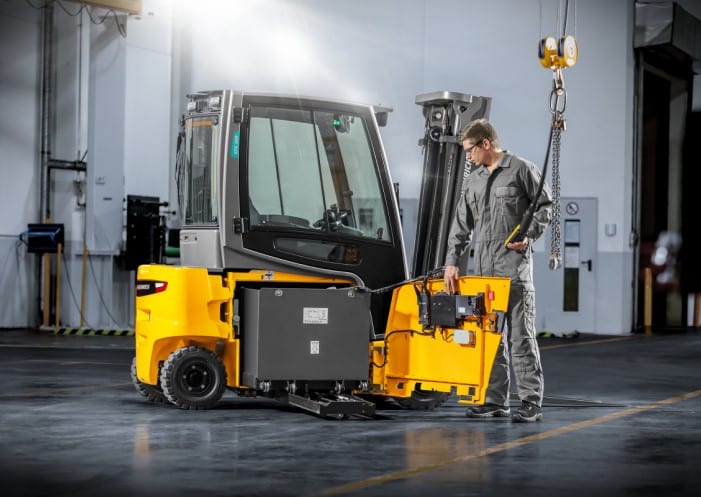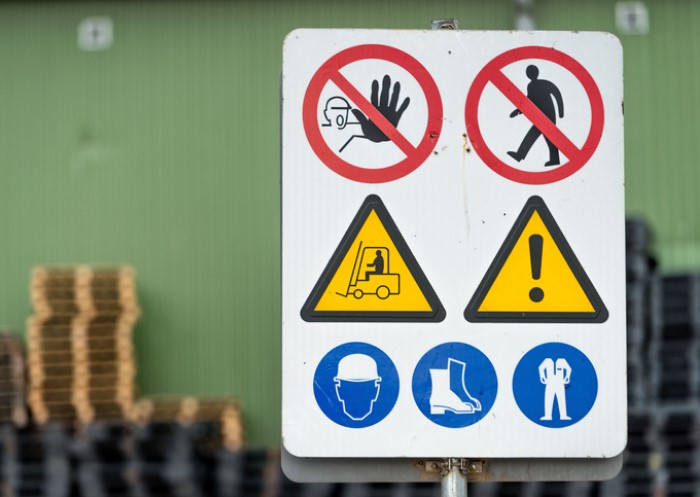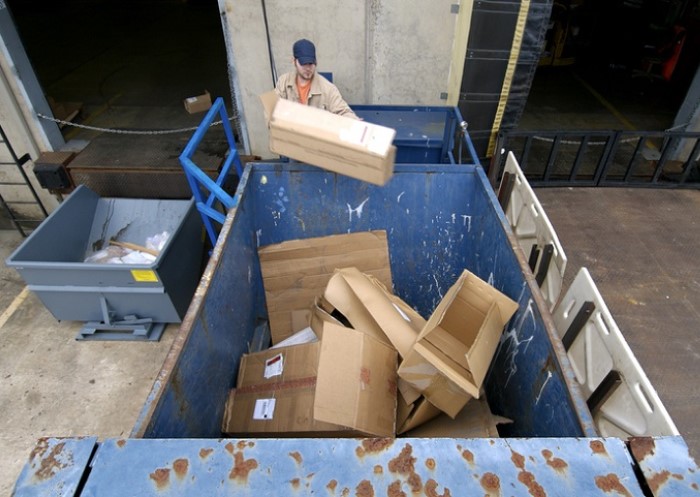Table of contents
Depending on the company and industry, it is often necessary to carry out activities at a height. Ladders and stepladders are usually the go-to tools of choice in these cases. Regardless of whether you use leaning ladders, multi-purpose and combination ladders, telescopic ladders or stepladders in your company, knowing how to safely use a ladder is of the utmost importance. The general handling of ladders and stepladders in the workplace is strictly regulated, as there is a high risk of injury if they are used improperly or without caution. The taller the ladder, the greater the risk of an accident occurring, so practicing safe use of ladders and stepladders, as well as understanding the relevant occupational health and safety regulations play an extremely important role when using this type of equipment. In this guide, you will learn what you need to be aware of when working on different types of ladders, up to which height it is permissible and which legal regulations apply to occupational safety.
Tips for safe use of ladders and stepladders
Companies are generally obliged to ensure the occupational safety of their employees. This applies to all areas of operation, from affixing the necessary safety signs on company premises to regularly inspecting shelving racks that require testing to ensuring proper traffic guidance systems onsite. When it comes to working at heights and fall protection measures, ladders and step ladders are no different. Employees who carry out tasks on ladders should therefore be fully aware of the safety regulations associated with using this type of equipment.
Before you even start climbing up a ladder, you should consider the following ladder safety tips and guidelines:
1. Use ladders and stepladders only when absolutely necessary
Before using a ladder, check whether you really need it. If you can use safer work equipment such as scaffolding, this may be the better choice. It may also be a good idea to wear PPE on the ladder for additional fall protection measures. You should only use ladders as a high-level workstation if this is the safest solution; or if the use of safer equipment such as working platforms or scaffolding is not advisable due to time or spatial constraints. In general, working conditions should always be safe enough for a person to work alone and extreme caution should always be taken on ladders and stepladders.
2. Select a suitable ladder
When it comes to choosing a ladder, certain decisive parameters should be taken into account to ensure optimal safety:
Floor conditions
The floor should be level and as non-slip as possible. This is especially important if you are planning to set up a larger construction site where ladders may be used in more than one place. In such dynamic environments, working and safety conditions sometimes change rapidly, either as construction progresses or simply because of the weather.
Task to be carried out
Make sure you work as ergonomically as possible. Platform ladders are particularly suitable for many jobs as they ensure a high level of safety.
Working height
When choosing a suitable ladder, bear in mind that – depending on the type of ladder – you should not work from the top three rungs. Ideally, the ladder should always extend at least 1m above where you are working.
Load capacity
You must not load ladders and stepladders with more than the maximum permissible weight. Try to only carry lightweight materials and tools where possible.
3. Train your team
As an employer, you are obliged to train your employees on the safe use of ladders and stepladders and to inform them about the possible dangers of using a ladder (both during use and due to external influences). It is your responsibility to ensure that regular ladder and stepladder safety checks are carried out by your employees, especially before use.
4. Minimise external hazards
Additional hazards can arise that may make using a ladder even more dangerous. It’s important to remain alert to the following situations:
- electrical installations
- reactive materials
- pipelines
- nearby vehicle and pedestrian traffic
- shafts, ducts
- crane systems
- falling items, materials or tools
How to safely use a ladder or stepladder
After being instructed on the specific ladder safety regulations, all those involved must be able to independently check the safety of the climbing equipment before each use. Furthermore, it is advised to have regular ladder and stepladder safety checks carried out by a recognised testing centre. The following ladder safety checklist should be observed to ensure best safety practices when using the equipment:
- Rungs and stiles
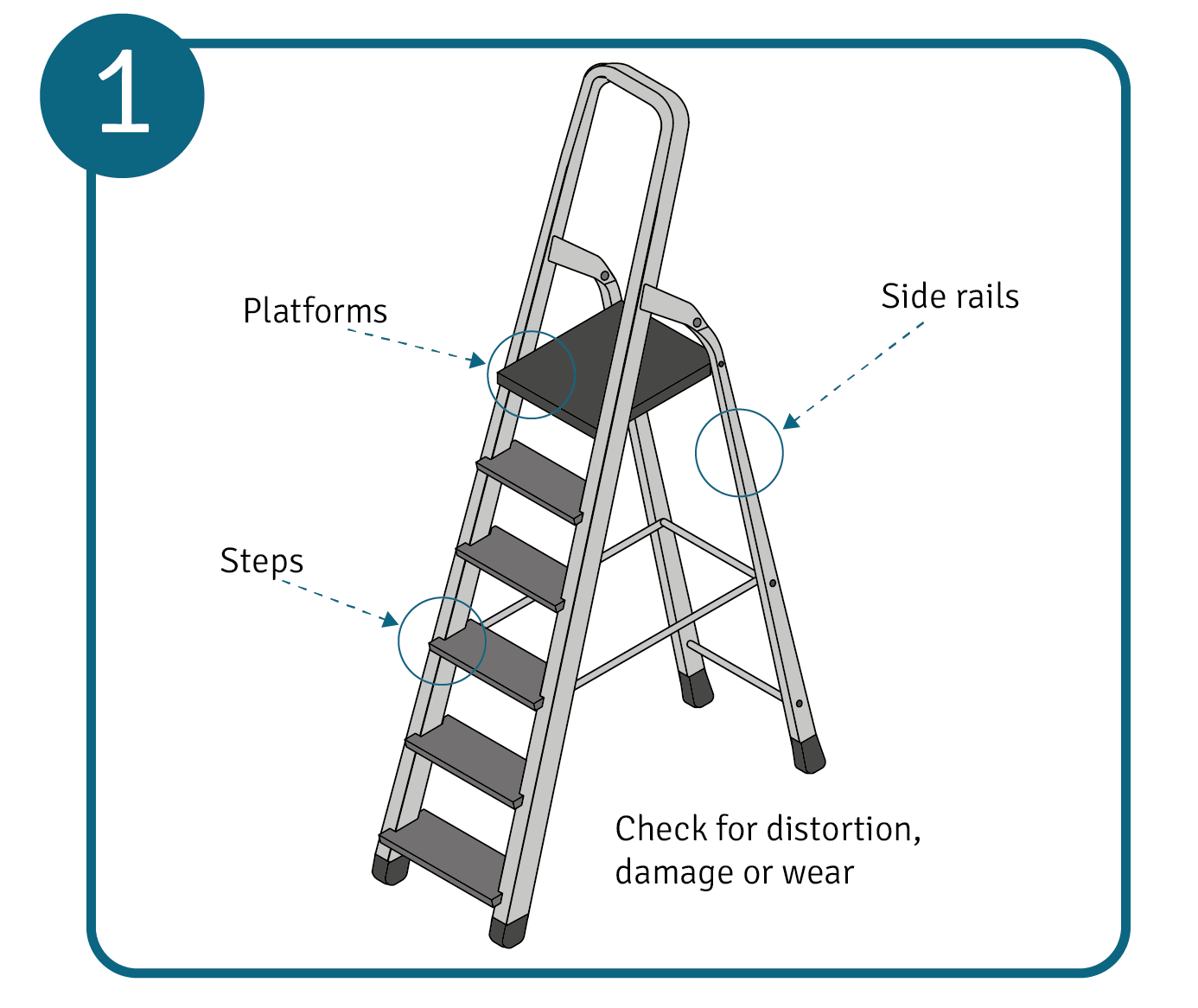 Check side rails, rungs, steps and platforms for any distortion, damage or wear. If necessary, treat markings with a protective agent suitable for the respective material.
Check side rails, rungs, steps and platforms for any distortion, damage or wear. If necessary, treat markings with a protective agent suitable for the respective material. - Fittings
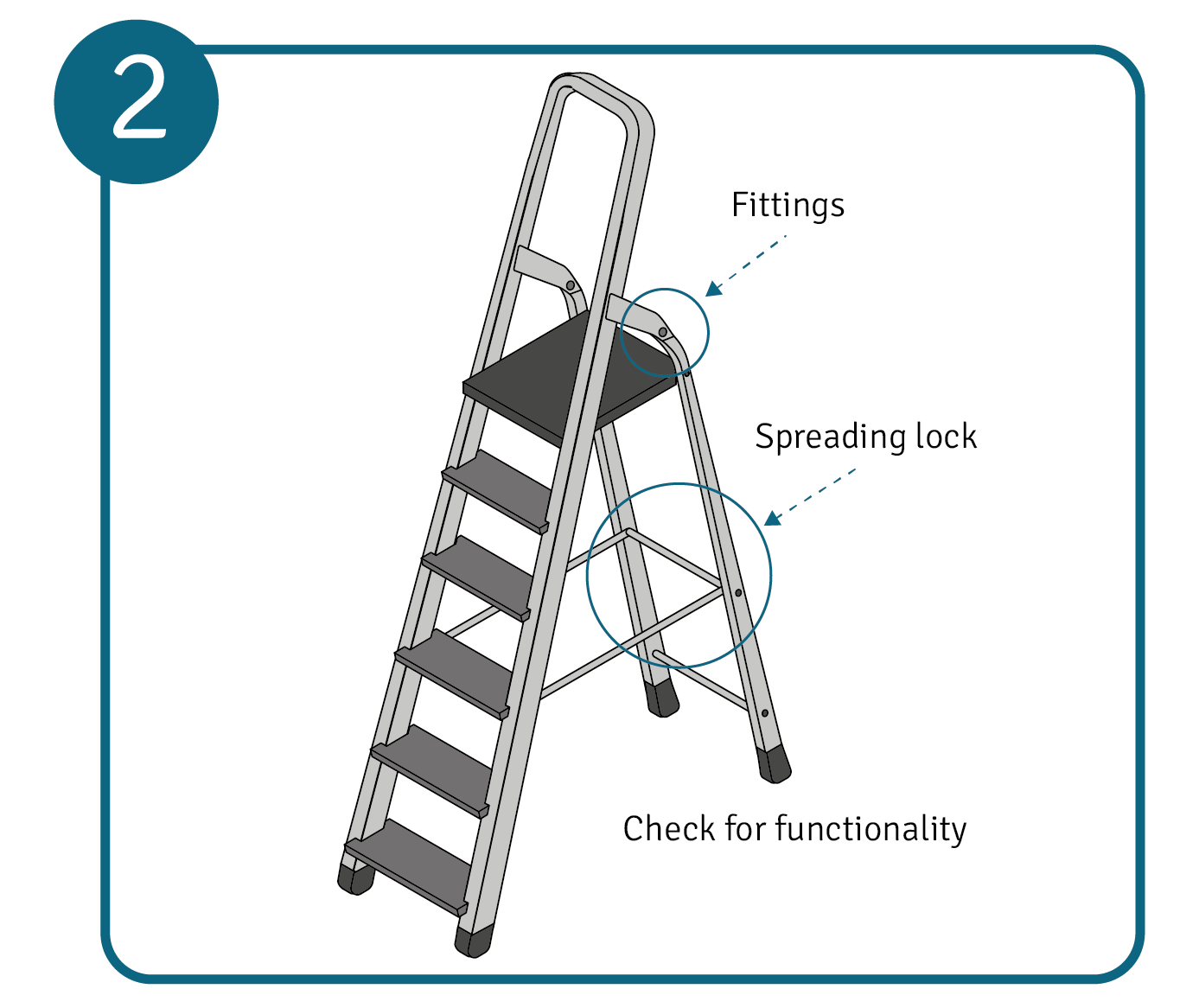 Check all fittings, particularly the spreading lock. Are they correctly positioned, functional and securely fastened? Check for any possible damage.
Check all fittings, particularly the spreading lock. Are they correctly positioned, functional and securely fastened? Check for any possible damage. - Stability
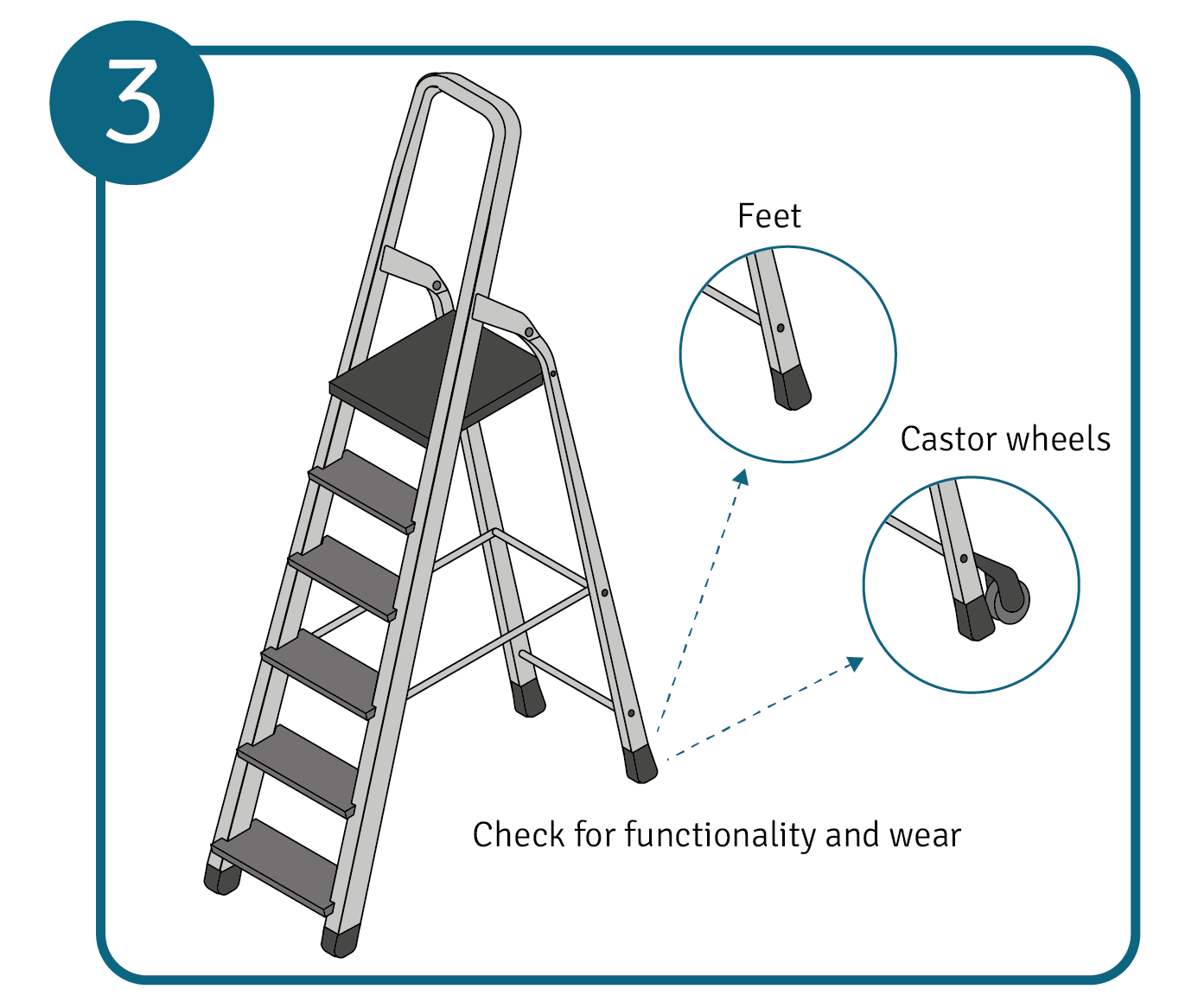 To ensure stability, check that the feet and castor wheels are correctly positioned, securely fastened, free from significant wear and in good working order.
To ensure stability, check that the feet and castor wheels are correctly positioned, securely fastened, free from significant wear and in good working order. - Accessories
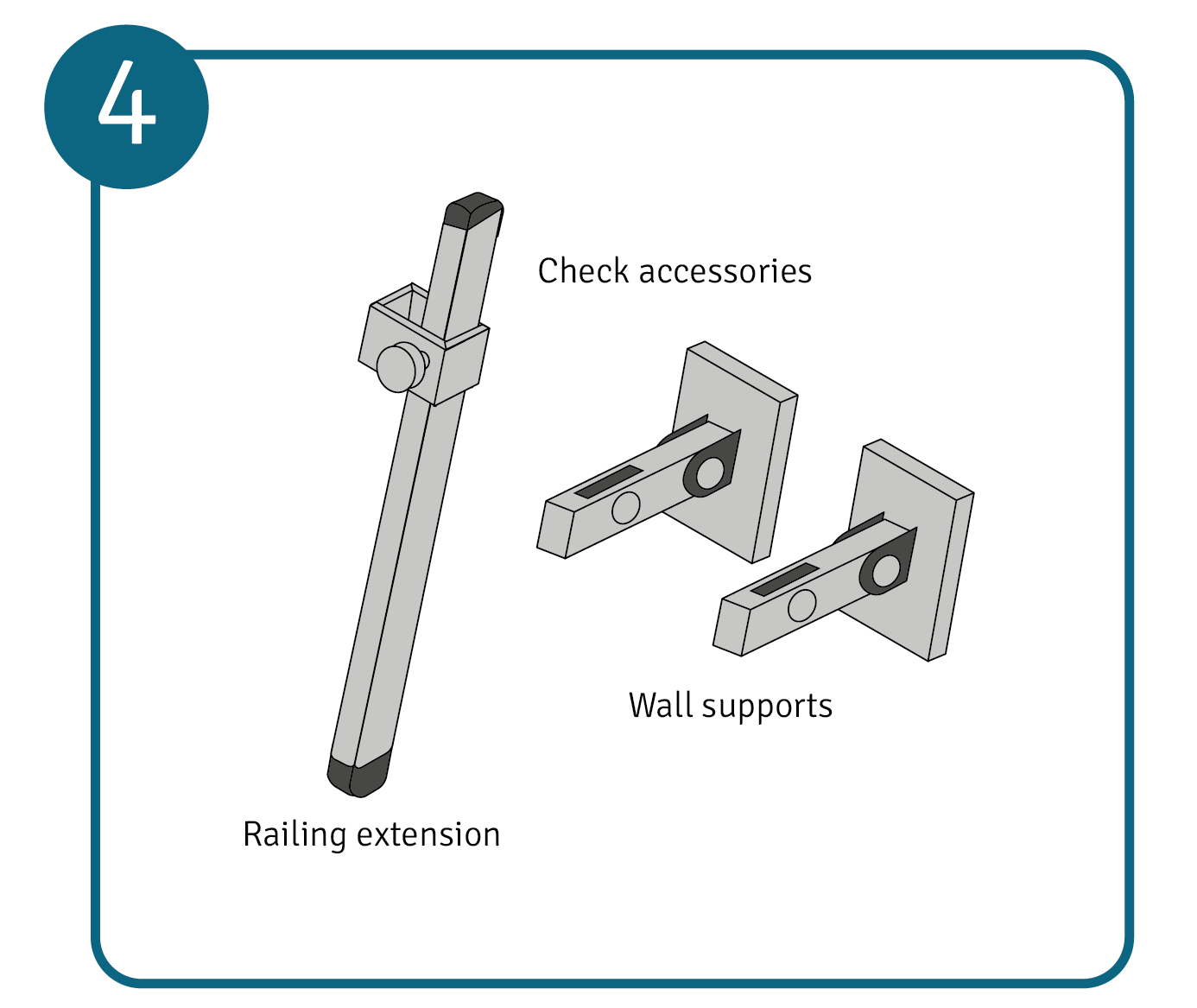 You should also check any ladder accessories before use: railing extensions or wall supports must be securely fastened. Check for functionality and any signs of wear.
You should also check any ladder accessories before use: railing extensions or wall supports must be securely fastened. Check for functionality and any signs of wear. - Ladder safety signs and certifications
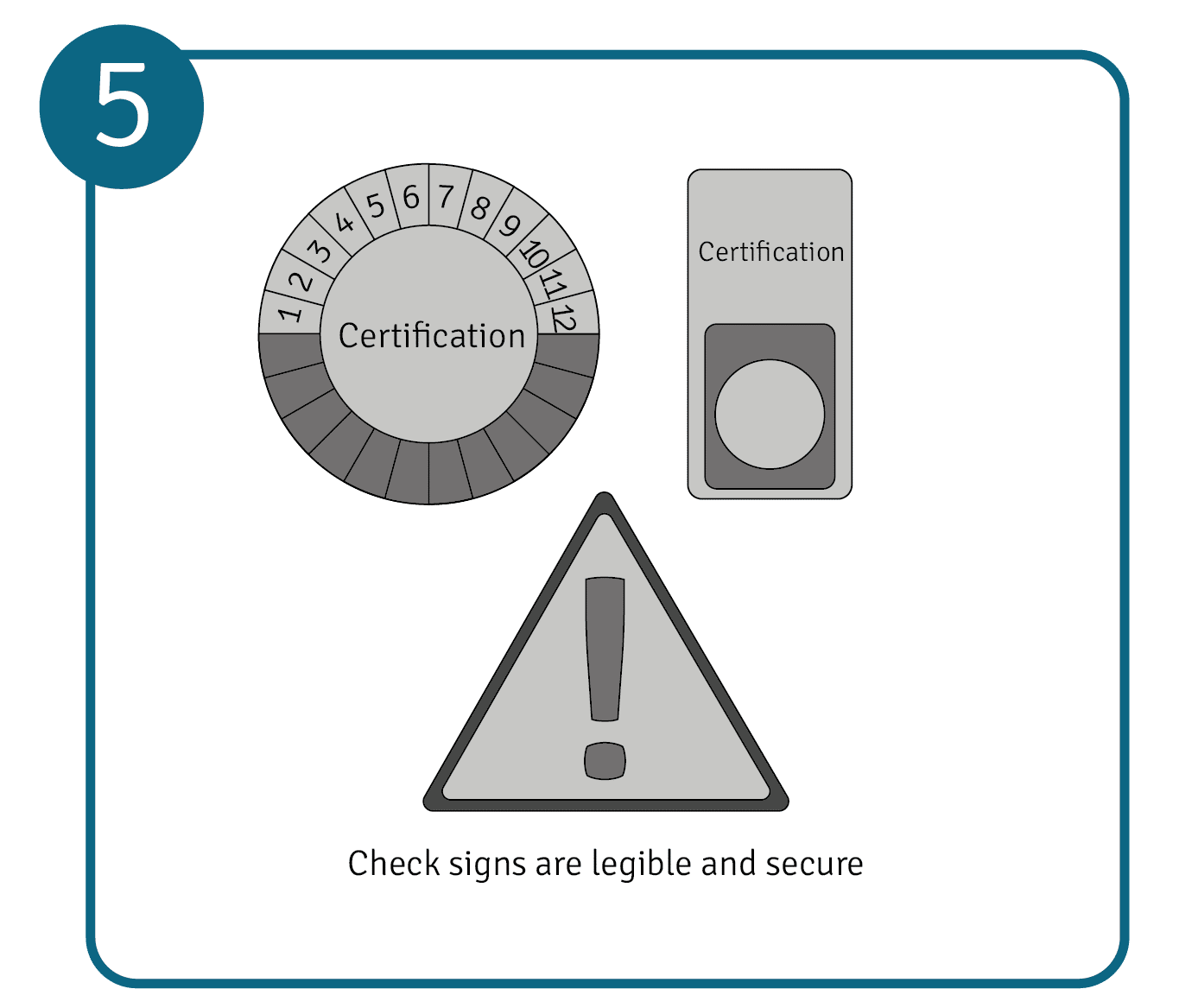 Signs giving instructions on the safety and use of the ladder must be clearly legible and positioned securely. The ladder should be marked as tested and certified according to current standard BS EN 131.
Signs giving instructions on the safety and use of the ladder must be clearly legible and positioned securely. The ladder should be marked as tested and certified according to current standard BS EN 131.
Which rules and regulations apply for the safe use of ladders and stepladders?
The BS EN131 standard for portable steps and ladders are the current regulations which should be adhered to when it comes to ladder safety in the workplace. Furthermore, the Ladder Association and the Health and Safety Executive (HSE) jointly produced “LA455 Safe Use of Ladders and Stepladders – a brief guide” in 2021 – a new guidance that replaces HSE Guidance Document INDG455. Outlining the dangers of ladder use, the guide offers practical ladder and stepladder safety tips, checklists and more for safe professional and non-professional use. It is recommended this guideline be used in combination with the HSE publications on working at height and health and safety in roof work.
FAQ for ladder safety
The following regulations provide the legal framework for working on and handling ladders and stepladders:
• BS EN 131
• LA455 Safe Use of Ladders and Stepladders
• Health and safety in roof work, Guidance HSG33
• Working at height safely: A brief guide, Leaflet INDG401
• Rails, rungs, steps and platforms should be checked for distortion, damage and wear and, if necessary, treated with a protective agent suitable for the material in question.
• Spreading locks and fittings should be checked for functionality, security and possible damage.
• Feet and castor wheels should be checked for security, correct positioning, wear and functional capability.
• Accessories such as rail extensions or wall supports should be secured and in full working order.
• Any required markings or signs that provide information on ladder or step stool safety or usage must be clearly legible and securely attached to the equipment.
There is no maximum height for using a ladder according to UK ladder regulations. Guidelines recommend, however, that should a ladder exceed 9m in height, suitable resting platforms should be installed or an alternative, such as scaffolding, be used instead.
There is no maximum time for ladder usage specified in UK regulations. However, it is recommended that should a task require you stay up on a ladder or stepladder for more than 30 minutes, you use alternative equipment – such as scaffolding – instead.
Please note: The regulations mentioned above represent only a selection of the most important legal requirements. Please refer to the listed organisations and directives for more detailed information. If in any doubt, consult experts or contact the relevant regulatory authorities.
Image source:
© gettyimages.de – sturti



